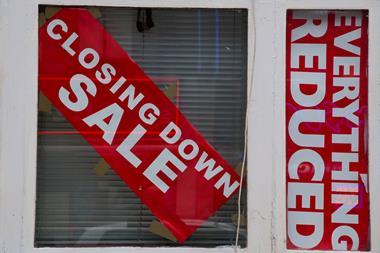There is a fraudulent trend emerging around parcel theft that could spur new products in the insurance industry, says chief executive
Online orders in the run up to Christmas have soared, with an unfortunate subsequent increase in parcel theft and related insurance claims.

The crime, dubbed “parcel piracy,” sees opportunistic thieves pinch parcels left outside homes for delivery.
According to recent statistics from tech firm Quadient, this type of theft has skyrocketed by 500% since 2019 in the UK, with the cost of living crisis and inflation further compounding the issue.
It revealed that theft has risen 57% in the last year, with the average reported value of a stolen parcel sitting at £66.50.
With 11% of UK households having reported a parcel theft in the last year, the data shows a hidden economy of £206m in stolen goods.
Speaking exclusively to Insurance Times, Anansi chief executive and cofounder Megan Bingham-Walker says: “Generally, retailers are going through quite turbulent times and one issue that they are grappling with is fraud.”
Alongside the rise in the amount of stolen parcels has come the rise in fraud surrounding this issue, where some customers allege that their parcel has either been stolen or not arrived in a fraudulent attempt to recoup its value.
This includes doorstep fraud, shipment fraud and even fraudulent delivery drivers.
She continues: “That’s one of the reasons why retailers are getting to the point where insurance is on the agenda – what they are looking to do is get support with identifying what is [or is not] a genuine customer that has not received an item or damaged goods.”
Digital startup broker Anansi specialises in digital goods transit insurance, such as parcel cover for ecommerce merchants – the product covers the movement of items across the supply chain from warehouse to consumer.
It works with large retailers and fulfilment centres to cover shipments by offering embedded insurance in a warehouse management system.
Bingham-Walker says she has noted a “fraudulent trend,” with retailers struggling to contend with the amount of compensation requests they are receiving from courier delivery firms.
A resultant insurance protection gap has emerged around this area, with retailers having a “big gap” left to fill after repaying clients.
Changing British high street
Deliveries, and the potential need for insurance protection in this sector, have also risen in prominence as shopping on the high street has declined, with retailers such as Topshop, Debenhams and Miss Selfridge moving to online only sales.
Read: Two UK-based insurtechs selected by Google to receive Black Founders Fund
Read: Insurer calls on government to extend trade credit insurance amid alleged ‘Topshop collapse’
Explore more risk management-related content here or discover other analysis stories here
Bingham-Walker says: “Insurance is front of mind. What we’re seeing is that retailers that maybe would have had a steadier loss in the past are now looking to insurance for the last mile and middle mile shipments as part of the mix.”
Other emerging insurance opportunities include storage insurance, returns and shrinkage, which is the difference between recorded and actual inventory.
Anansi is currently working with returns businesses to insure the transit of parcels, with Bingham-Walker suggesting that insuring retailers against the possibility of a return could present another product opportunity.
She says: “There’s going to be lots of new opportunities as insurtechs or insurers come up with new products and the risks become better understood. The more data you have, that data can then price risk more accurately.”
For example, one well known shoe company has been experiencing a “massive uptick” in the theft of entire shoe delivery trucks over the past 12 to 18 months.

“Any kind of technologies or tools to support with theft are something that people are going to be implementing, as well,” she adds.
One protection against parcel delivery fraud is the photos taken by courier drivers to confirm receipt, but even this is can be manipulated with thieves taking the photo first, logging it on the online delivery portal and then swiping the parcel.
However, by using geospatial data, this process can be improved and the the location of where the photo was taken can be pinpointed.
Bingham-Walker adds: “That’s one of the things that we want to achieve with the product, to not just insure losses, but to work with the retailer on trends in postcodes, or with drivers to essentially reduce the losses over time.
“The goal of new insurance products is not just to insure but to set targets and use that data to support the customer.”
Hosted by comedian and actor Tom Allen, 34 Gold, 23 Silver and 22 Bronze awards were handed out across an amazing 34 categories recognising brilliance and innovation right across the breadth of UK general insurance.




















































No comments yet